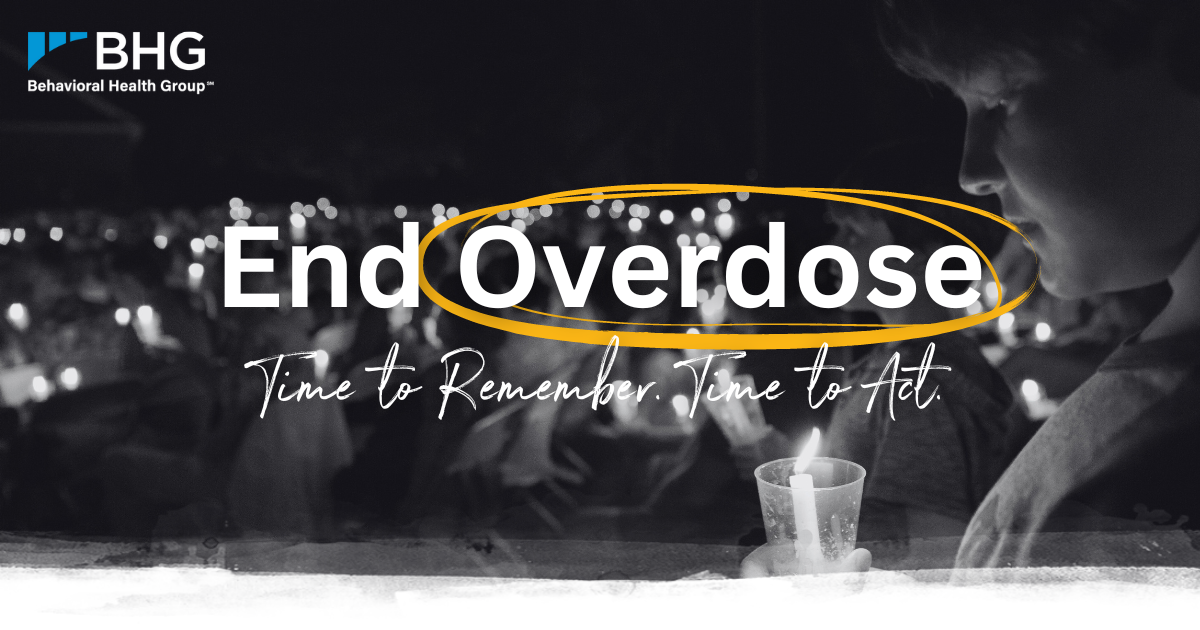
Every year, thousands of lives are lost to drug overdoses, impacting families and communities worldwide. To honor these lives and bring attention to this serious issue, we observe International Overdose Awareness Day on August 31, a day aimed at raising awareness about overdose, reducing the stigma around drug-related deaths, and recognizing the grief of those who have lost loved ones.
Through awareness initiatives like International Overdose Awareness Day, we can help prevent these deaths, address the challenges associated with drug use, and promote treatment and recovery.
What is International Overdose Awareness Day?
International Overdose Awareness Day was initiated in 2001 by Sally J. Finn at The Salvation Army in St. Kilda, Melbourne. The day focuses on educating the public about the dangers of drug use, remembering those who have lost their lives to overdose, and supporting the families and friends affected by these tragedies.
Today, community members and various organizations hold events to raise awareness and emphasize that overdose is preventable.

Understanding the Drug and Overdose Epidemic
To fully grasp the importance of International Overdose Awareness Day, it’s crucial to understand the scope of the drug and overdose epidemic. Here are some key facts that highlight the serious nature of the crisis:
- In 2022, a report found that 48.7 million people in the U.S. aged 12 or older (or 17.3% of the population) had a substance use disorder (SUD) in the past year.
- In 2019, approximately 600,000 deaths globally were caused by drug use, with nearly 80% of those deaths related to opioids.
- The National Safety Council reported that, as of 2021, opioids are responsible for the most significant drug overdose crisis in the U.S.
- According to a 2024 report by the Centers for Disease Control and Prevention (CDC), drug overdose rates decreased between 2021 and 2022 for individuals aged 15-34 but increased for those aged 35 and older.
Spotting the Signs of Overdose
Recognizing the signs of an overdose, especially an opioid overdose, can help save lives. Being able to identify these signs quickly allows for immediate action, which can prevent deadly outcomes. Here are some common signs of opioid overdose:
- Unconscious or not able to speak
- Extremely pale face or skin that feels clammy to the touch
- Fingernails or lips with a purple or blue color
- Limp body
- Shallow or stopped breathing
- Faint or no heartbeat
- Vomiting or gurgling noises

Responding to an Overdose
If you suspect someone is experiencing an overdose, it’s important to act quickly and knowing the right steps can save a life. Here’s what you should do:
Calling 9-1-1
The first and most important step is to contact emergency medical services (EMS).
- Call 9-1-1: Immediately contact emergency services and provide the dispatcher with as much information as possible, including the individual’s condition and your location.
- Follow Instructions: The dispatcher will guide you through what to do until help arrives. Stay on the line and follow their instructions carefully.
- Perform CPR if Necessary: If the person is not breathing or has no heartbeat, begin CPR if you are trained to do so. Follow the dispatcher’s instructions until help arrives.
Administering Nasal Naloxone
Naloxone (such as Narcan, Kloxxado, and other brands) is a life-saving medicine that rapidly reverses an opioid overdose and is available as both a nasal spray and an injectable. The medication attaches to opioid receptors in the brain, reversing and blocking the effect of opioids. This can quickly restore normal breathing if it has slowed or stopped due to an overdose. Even if you’re unsure whether someone has opioids in their system, administering naloxone is safe and could help them.
Here are steps on how to use the nasal spray:
- Prepare the Nasal Spray: Remove the nasal spray from the box.
- Position the Individual: Lay the individual on their back. Support their neck with your hand and tilt their head back.
- Insert the Nasal Spray: Hold the spray with your thumb on the bottom of the plunger and your first and middle fingers on either side of the nozzle. Gently insert the tip of the nozzle into one nostril until your fingers are against the bottom of the patient’s nose.
- Administer the Dose: Press the plunger firmly to release the dose. Remove the spray from the nostril after administering.
- Place in Recovery Position: Move the individual onto their side (also known as the recovery position) after administering the medication and contact emergency services immediately.
- Monitor and Repeat if Necessary: Watch the individual closely. Additional doses can be given every 2 to 3 minutes if needed, until the individual responds or emergency services arrive.
By contacting 9-1-1 and/or administering naloxone, you can provide assistance that may save a life during an overdose situation.

Take Action on International Overdose Awareness Day
International Overdose Awareness Day is not only a time to remember those who have lost their lives to overdose but also an opportunity to take meaningful action. Here are some ways you can get involved and make a difference.
Raising Awareness
Raising awareness is crucial in the fight against overdose. You can organize or participate in community events that educate the public about overdose prevention. Wearing purple, the official color of International Overdose Awareness Day, is another way to show your support. Additionally, holding or attending candlelight vigils can honor those who have passed away from overdose.
Advocating for Change
Advocacy plays a vital role in creating and supporting policies that prevent overdoses and promote harm reduction. Consider writing to your local city or state representatives to advocate for policies that support overdose prevention. You can also join community discussions to raise awareness and support organizations working to address the overdose crisis.
Advocating for Access to Treatment
Ensuring everyone has access to addiction treatment is crucial. Highlight the importance of accessible treatment and advocate for resources that ensure everyone can get the help they need.
Offering Support
Providing support to those struggling with addiction can impact their recovery journey. Show compassion and understanding, reminding them that they are not alone, and that help is available. Encourage them to seek treatment and support them throughout their recovery.
Start Your Journey to Real Recovery at BHG
International Overdose Awareness Day is a time to remember our loved ones lost to overdose, but it also highlights the ongoing struggle of thousands still living with addiction. If you or someone you know is struggling with opioid addiction, BHG is here to help.
Our comprehensive care includes evidence-based treatment from medication-assisted treatment to counseling to other support services, all personalized to meet the unique needs of each individual.
Call or find a BHG location near you and experience real recovery.
About BHG
Behavioral Health Group (BHG) is a fast-growing healthcare company creating a new class of recovery center for individuals with substance use disorder (SUD). BHG specializes in medication-assisted recovery (MAR) combined with addiction counseling delivered through the largest network of Joint Commission-accredited outpatient treatment and recovery centers in the U.S. Founded in 2006 and led by an experienced executive team with deep experience in the healthcare and behavioral health industries, BHG believes that comprehensive, evidence-based, personalized treatment plans focused on real recovery restore lives, strengthen families, and rejuvenate the communities in which we serve. BHG capabilities include a full range of counseling and behavioral health therapies for individual, family, and group counseling, medication-assisted recovery, intensive outpatient programs, mental health services, case management, and community resource coordination services delivered in its treatment centers and through telehealth. BHG treatment centers provide access to all FDA-approved medications through in-center dosing or prescriptions programs. BHG accepts Medicare, Medicaid, most major commercial health plans, and works with state grants to support patients who choose to self-pay. With 117 locations in 24 states, BHG has more than 2,100 employees who serve more than 43,000 patients. To learn more, visit bhgrecovery.com.
